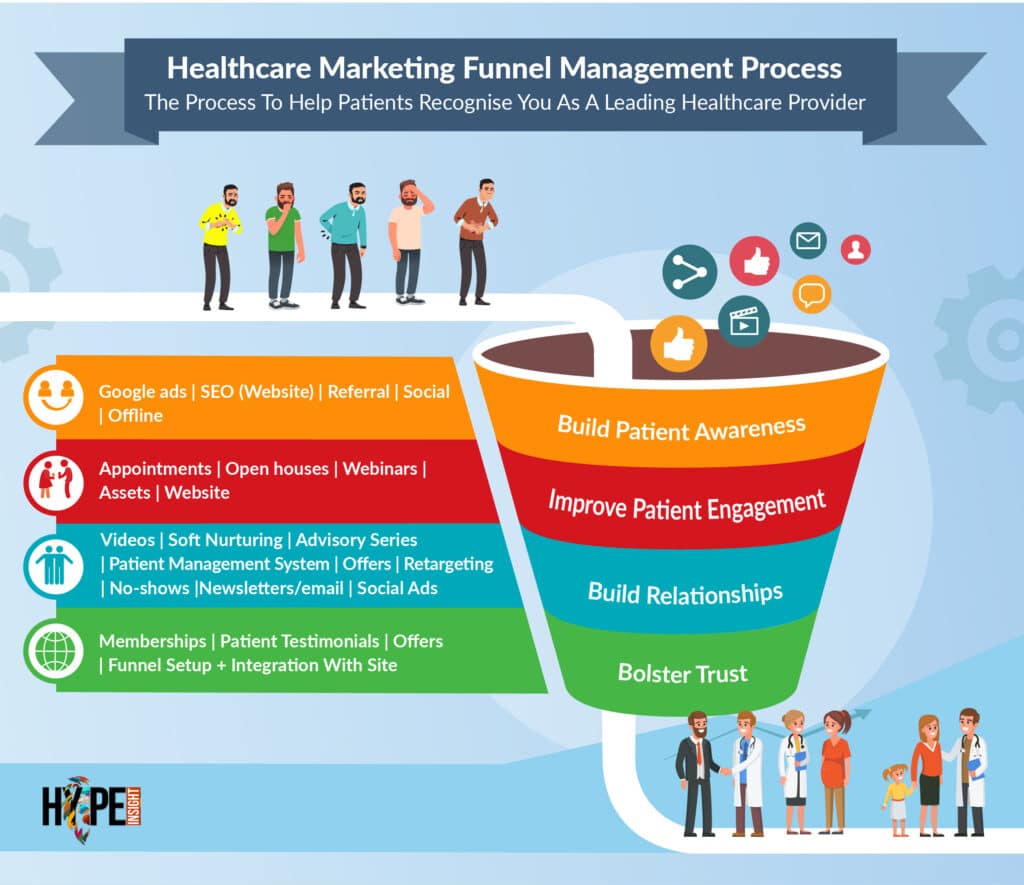In 2022, 7 out of 10 website visitors who added items to their online shopping cart did not complete their purchases. Why? Because marketing strategies are always trying to push people to buy more and use sales-heavy marketing strategies. What they fail to realise is that the brands that perform the best are the ones that have a full-funnel marketing strategy.
So what is a full-funnel strategy? How do organisations go about building one?
A full-funnel marketing strategy takes every stage of the customer journey into consideration rather than just concentrating on the sales. The strategy takes a holistic view of the customer journey and uses the information to create nurturing relationships and build better brand experiences.
One of the hallmarks of a good full-funnel strategy is that it’s driven by data gathered from a range of internal and external sources, giving you the ability to optimise every stage of the customer journey for better sales and ROI.
Stages of the marketing funnel
If you’re familiar with the traditional funnel model, you’ll know that it’s linear and begins right at the top (awareness) and ends at the bottom where your prospective customers convert.
The challenging part is that marketing funnels don’t always follow this order in the real world. People don’t always start their journey at the top and progress through the funnel in an almost textbook-like manner. It would probably be a lot simpler if they did, but it isn’t always the case.
Many people bounce around the funnel before they convert. They might even make it all the way to the bottom of the funnel and disappear without a trace.
The funnel—much like people’s real-life purchasing behaviour—is non-linear and that’s why it’s important to understand the customer journey from the moment they become aware of your brand to the point of conversion. A large part of this involves having a clear understanding of how every stage of the funnel works.
Stage 1: Awareness (Top of the funnel or ‘TOFU’)
The top of the funnel is generally where your prospective customers become aware of your brand and engage for the very first time. They may not know a lot about your product or service, so it’s important to focus on the content and marketing material to improve brand awareness.
Stage 2: Consideration (Middle of the funnel or ‘MOFU’)
Prospective customers enter this stage once they have had a meaningful interaction with your brand. These are the people who follow you on social media, subscribe to your newsletter, or have signed up for a demo.
Stage 3: Conversion (Bottom of the funnel or ‘BOFU’)
This is the ultimate destination for your prospective customers and this is where they’ll go before they convert. To reach this point, you’ve captured their attention, established trust, and cultivated a relationship with them.
Building a full-funnel marketing strategy
If you’re looking to create a winning full-funnel strategy, there are some tried and tested tactics you can easily inject into your business to help boost performance and help with sustainable growth.
Step 1: Map your customers’ journey
Customer journey mapping is critical and marketers need to understand how to shift their customers from having zero awareness about their brand to becoming a customer.
While the 3 stages of the marketing funnel are universal, brands need to explore how it applies to their business and industry by putting themselves in their customers’ shoes.
Here’s a marketing funnel that focuses on the healthcare industry to make this a bit more clear.

Think about who your customers are. What problems are they trying to solve? How can they find the right solution? How can you create a strategy that helps you become a part of their journey?
As we mentioned earlier, everyone’s journey is unique and all brands can do is understand how potential customers are going to make these decisions and then use media and content to guide them.
Step 2: Select your marketing channel
Trying to be the jack of all trades is a surefire way to becoming the master of none. This is why it’s important that you choose one channel to begin with and develop, execute, and monitor the performance until you’ve got a system that works. Once you’ve nailed this, then you can move on to another channel.
You have the option of selecting from different social media platforms, SEO, or even paid advertising. For instance, if you use SEO, you have the ability to target high-ranking keywords across the funnel and get a good amount of traffic consistently.
Similarly, there are many benefits that other marketing channels can offer, and selecting the best channel for your brand and purpose can play a large role in the audience you target and the overall success of your strategy.
Step 3: Select your KPIs
Key performance indicators (KPIs) are metrics that will determine how well your marketing strategy is performing. This can be anything from goal conversions, website traffic, bounce rate, time spent on the page, and more.
For the purpose of this article, let’s focus on a single KPI: website traffic. Directing traffic to your website is one of the simplest ways to determine how well your marketing efforts are working. Generally, more traffic = more sales.
This doesn’t mean that you should drive traffic for the sake of getting more traffic. Target the right keywords and create content around your marketing funnel. If you see a marked improvement in your traffic, it’s an indicator that your efforts are working.
Step 4: Create content
Once you know your KPIs and your strategy is in place, it’s time to start creating content. The kind of content you create will depend on what you’re trying to achieve and the marketing channel you use. Let’s take SEO for the purpose of this example as your go-to channel for generating traffic.
Keyword research is going to be your first step in creating an SEO strategy that covers the entire funnel. It’s essential to identify which keywords your potential customers are searching for.
Once you’ve finished your keyword search, you can prioritise which keywords you want to target first and start creating content.
Step 5: Monitor your performance and adjust
Once you’ve executed your full-funnel marketing strategy, it’s time to check how well your content and strategy are working.
If you notice that you’re losing your edge over a period of time, it’s time to start making a few adjustments to your strategy. Don’t expect a single strategy to hold your success in perpetuity. Understand that as time goes by so do the needs of your customers.
Don’t think of this as a ‘set-and-forget’ strategy. Regularly monitor your strategy and whether it’s still holding strong and if it isn’t, it’s time to begin re-strategising.
Full-funnel marketing strategy—your alternative to traditional marketing
When done right, full-funnel marketing can reduce your costs and maximise your sales, but having the right strategy also goes a long way in helping you get better results.
Simply put, you need to understand your customers, create content for every step in the customer’s journey, monitor how the content is performing, and adjust your strategy based on the data.


